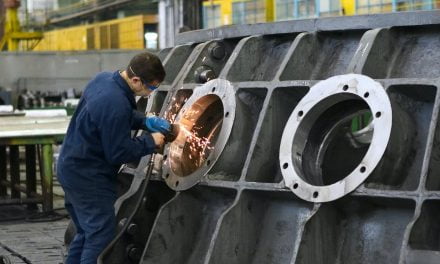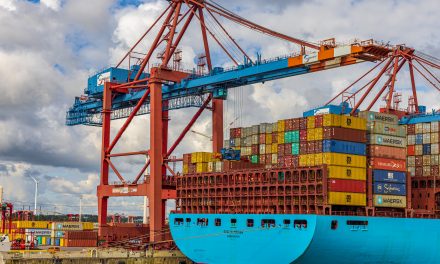Singapore and Vietnam relations are deepening amid a burgeoning Vietnamese economy which offers a myriad of opportunities.
Singapore Prime Minister Lee Hsien Loong visited Vietnam for three days last week, at the invitation of his counterpart, Prime Minister Pham Minh Chinh.
The visit came as the two Southeast Asian neighbours celebrate this year 50 years of bilateral relations as well as 10 years of strategic partnership. Loong made the visit between 27 and 29 August.
“The visit signifies the enduring diplomatic ties that Singapore has fostered with Vietnam for over half a century and commemorates the 10th anniversary of the Singapore-Vietnam Strategic Partnership,” Dedi Dinarto told Diplomatic Network (Asia) in an interview.
A strategic partnership between countries is a formal and often long-term alliance or cooperative relationship. It usually indicates that the countries involved have strong relations with each other.
Singapore and Vietnam are flirting with the idea of upgrading the partnership to a comprehensive strategic partnership. This would further intertwine their roots as the two nations look to build off their current synergies.
“[The visit] underscores the ongoing relevance of their collaborative efforts, demonstrated by the endorsement of seven agreements and three new memoranda of understanding during the visit, encompassing various domains, including education, economy, innovation, labour, skills development, climate change mitigation, and sustainable infrastructure,” Dinarto said.
The new agreements included an MOU on an innovation talent exchange programme, aimed at deepening innovation links between both countries; an MOU on skills development & labour; and an MOU on infrastructure cooperation.
Vietnam woos the region
“Vietnam’s increasing prominence as an alternative hub to China for manufacturing and green energy, coupled with its robust annual GDP growth of 6.5% in 2022, the highest in Southeast Asia, makes it an attractive partner for countries [in the region],” Dinato said.
“Therefore, the establishment of a comprehensive strategic partnership between Singapore and Vietnam, which may involve streamlining customs procedures to facilitate smoother flows of capital, goods, and people-to-people exchanges, offers substantial economic benefits for both countries.”
China, once Asia’s manufacturing darling, has seen a few spanners thrown into the works over the past decade. This has created more international intrigue for manufacturing alternatives to the world’s second-largest economy.
“Due to rapidly rising manufacturing labour costs in China since 2010, Vietnam has become an increasingly important export manufacturing hub for multinationals in sectors such as electronics and textiles,” Rajiv Biswas, Asia-Pacific chief economist at S&P Global Market Intelligence, told DNA in a separate interview.
China’s rapid economic growth has led to higher labour costs, making it less competitive in labour-intensive industries.
The Covid-19 pandemic equally exposed supply chain vulnerabilities, with many companies overly reliant on Chinese suppliers. As a result, businesses are diversifying their supply chains to reduce risk.
“Large increases in US tariffs on a range of Chinese manufactures under the Trump administration also resulted in some diversion of manufacturing supply chains away from China, including towards Vietnam,” Biswas said.
Vietnam’s new horizon
Meanwhile, Vietnam has also benefited from a wide network of free trade agreements which have improved its market access.
This includes Vietnam’s membership to free trade agreements spanning the region, like the Regional Comprehensive Economic Partnership; North America and South America, like the Comprehensive & Progressive Agreement for Trans-Pacific Partnership; as well as the bilateral EU-Vietnam Free Trade Agreement.
This gives Vietnamese exports favourable access to the very large, international markets, Biswas said.
“The rapid growth of Vietnam’s economy has made it an increasingly important trade partner for Singapore,” S&P Global’s economist said.
There is also a great opportunity for Singapore to tap into Vietnam’s young middle class, Oanda Senior Market Analyst Kelvin Wong told DNA in another interview.
“[There is great] growth potential of Vietnam’s young middle class which has improved in terms of education, technology know-how, and wealth that led it to become the fastest-growing middle class in ASEAN,” Wong said.
Vietnam’s gross domestic product has risen from about USD150 billion in 2010 to USD410 billion in 2022, making it similar in size of GDP to Singapore. Singapore’s GDP in 2022 was around USD466 billion.
“By 2030, Vietnam’s GDP is forecast to rise to USD850 billion, which will make it an increasingly important export market for a wide range of Singapore’s goods and services exports,” S&P Global’s Biswas said, “Vietnam’s large electronics manufacturing sector has also made it a significant market for Singapore’s electronics manufacturing exports.”
Vietnam also has a lot to benefit from its partnership with Singapore. In 2022, Vietnam was Singapore’s 11th largest trading partner. As at the end 2022, Singapore was also Vietnam’s second-largest foreign investor with a cumulative investment of USD70.8 billion.
Green economy
There was particular focus on sustainability during the Loong’s visit to Vietnam.
The Connectivity Framework Agreement between the two countries, first inked in 2005, was upgraded and expanded to include sustainability, among other areas of cooperation.
“With Vietnam’s transition to the green and digital economy, Singapore can be a partner to Vietnam in its next bound of growth. Singapore companies can build on the strong foundation and partnerships with Vietnam to capture opportunities in these new areas,” Singapore Second Minister for Trade & Industry Tan See Leng said at a ministerial meeting in Hanoi on Loong’s first day in the country.
Earlier this year, the Vietnamese government showed a strong commitment to the green energy transition with its latest power plan, dubbed PDP8. The plan outlines a roadmap for country’s energy mix until 2030, with a large chunk of capacity planned to be produced by renewable energy.
Singapore has shown great interest in working with Vietnam towards a greener economy, having most recently signed the Green-Digital Economic Partnership last month.
“It is likely due to Vietnam’s growing population and an increase in the wealth of Vietnam’s middle class over the last five years that have increased the levels of energy demand. Based on data from International Energy Agency, Vietnam is the second largest electricity consumer in Southeast Asia,” Oanda Senior Market Analyst Kelvin Wong told DNA in another interview.
“Coupled with strong local demand for improved air quality and government subsidies, there are ample business opportunities and an increased social need that led to a surge in local and foreign investments in green energy-related infrastructures and solutions-based projects,” he said.






